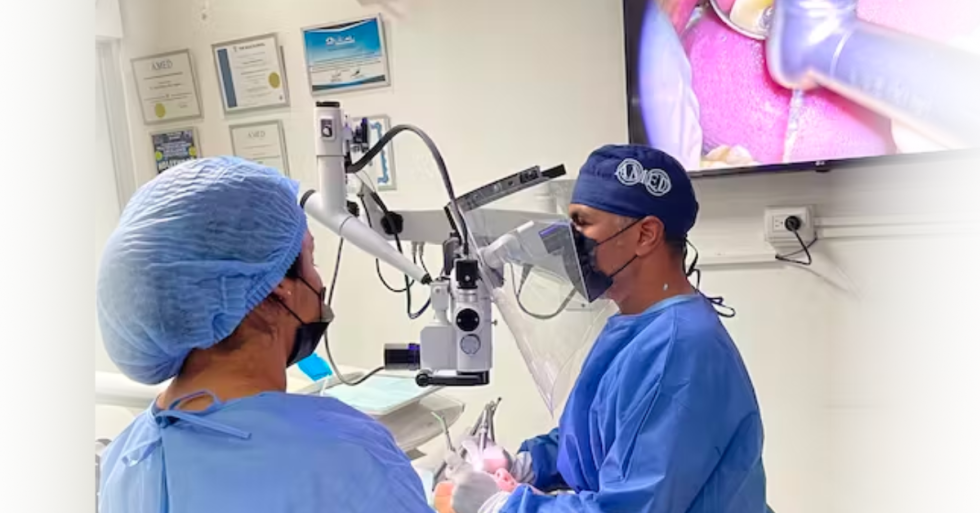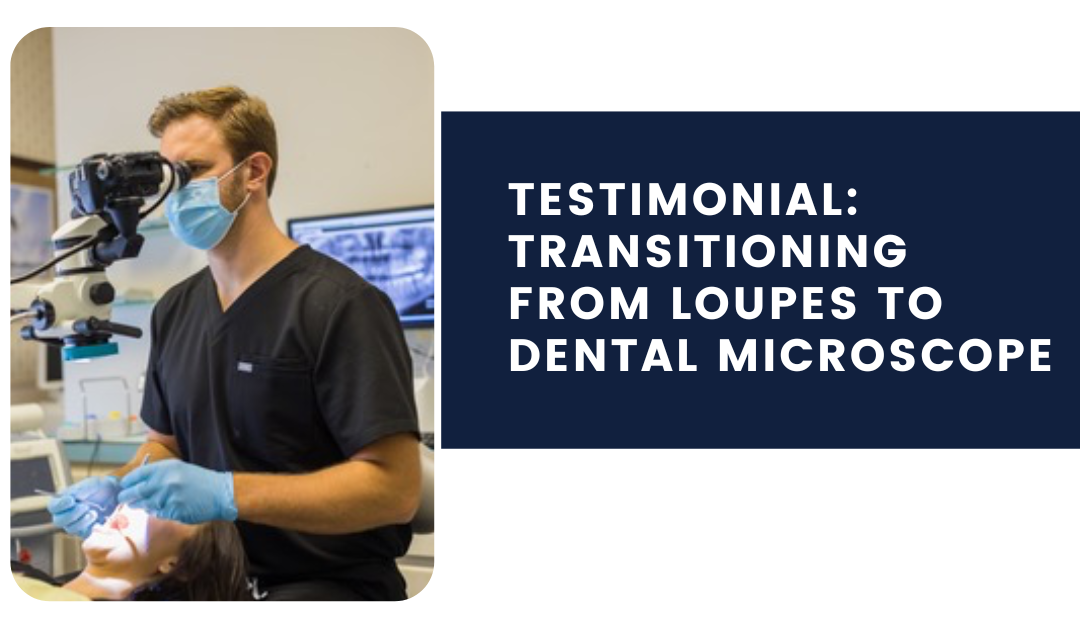What Is Four-Handed Dentistry? A Technique for Improving Ergonomics

Musculoskeletal disorders (MSDs) have long presented significant challenges to the well-being and longevity of dentists. In a profession like yours, where long hours are spent performing repetitive movements in a sitting position, your risk of musculoskeletal disorders increases.
Up to 70% of dentists experience musculoskeletal pain in their professional practice. It may surprise you to learn for many, these problems often start showing in the last few years of dental school. Cervical, lumbar, wrist, and elbow repetitive movement injuries can hinder the dentist’s performance. Over time, these repetitive injuries can prove career-ending.
Taking steps to avoid and mitigate MSDs can be a critical move for your comfort and productivity, ultimately helping you avoid early retiring prematurely due to health reasons. Today, we’re going to review one particular technique many doctors are seeking professional training for in order to gain proficiency and improve their ergonomic working environment.
What Is Four-Handed Dentistry?
Four-handed dentistry is a dental practice model where the dentist works closely with a dental assistant to perform procedures in a more efficient and ergonomic manner. This approach optimizes productivity, enhances the quality of patient care, and reduces fatigue and stress for the dental team.
In four-handed dentistry, tasks are divided in such a way that the dentist can focus primarily on the procedure itself, while the assistant takes on the role of ‘extra hands,’ aiding in tasks such as instrument exchange, suction, and retraction.
According to Dr. Juan Carlos Ortiz Hugues, an Endodontist and global lecturer on ergonomics using a microscope:
“A well-trained dental assistant will positively impact the dentist’s physical health, allowing the him or her to carry out necessary movements and focus solely and exclusively on the procedure. The assistant must control the horizontal reach distance and maintain frequently used instruments between 14 to 25 inches from the dentist at all times. This distance will allow the assistant to execute short, efficient movements and place instruments in the dentist’s hands.”
– Excerpted from Techniques for Improving the Ergonomics of Dental Practice. Decisions in Dentistry.
If you’re ready to start with hands-on training on this technique, we’ve compiled a list of recommended training facilities. Check out our article for a comprehensive listing: Where to Get Professional Training on a Dental Microscope.
Every year, Academy of Microscope Enhanced Dentistry (AMED) dental microscope training courses feature instructors Dr. Juan Carlos Ortiz Hugues (Endodontist) and Dr. William Linger (General Dentist). This program is a 2-day intensive, hands-on courses designed for any owner of a dental microscope, from new to experienced to even prospective buyers of the dental microscope. Each learner has their own operatory and the course can be adjusted to their level of experience. The goal of the course is teaching the correct way of using this tool.
For more course information and upcoming dates, visit: microscopedentistry.com.
Another course which especially focuses on this technique is Dr. Glenn van As’ training in North Vancouver, BC. See first hand clinical tips to allow for ideal four-handed dentistry with emphasis on instrument passes, using the monitors in the operatory, how to disinfect and bag the microscope as well as how the microscope can make dentistry more fun for team members, patients and dentists alike!
Now that you know a little bit more about this technique that many doctors are now assuming into standard practice, below are some key aspects of four-handed dentistry. Understanding each of these aspects can help reduce the time required for training and your learning curve.
Instrument Exchange
The dental assistant is trained to anticipate the dentist’s needs, ready to provide the next instrument even before it’s requested. This minimizes the time the dentist spends reaching for instruments, allowing for a more efficient procedure.
Ergonomics
Four-handed dentistry promotes good posture for both the dentist and the dental assistant, reducing the risk of occupational injuries such as back pain or carpal tunnel syndrome. The dental chair, equipment, and instruments are often specifically designed or adjusted to facilitate four-handed practice.
Suction and Retraction
The dental assistant often manages suction to remove saliva, blood, or debris from the patient’s mouth, as well as retraction to improve visibility and access for the dentist. This enables the dentist to work more efficiently and reduces procedure times.
Patient Care
With an extra set of hands, tasks like rinsing the patient’s mouth or adjusting the chair can be done without requiring the dentist to stop working. This not only speeds up the procedure but can also improve the overall patient experience.
Infection Control
The dental assistant is responsible for handling contaminated instruments and materials, allowing the dentist to maintain a clean field. This is crucial for infection control and patient safety.
Materials Preparation
The dental assistant often prepares materials like dental cements or impression materials, ensuring they are ready for use when needed. This contributes to a more streamlined and efficient procedure.
Improved Communication
Working in such close quarters fosters better communication between the dentist and dental assistant. This is not only beneficial for the procedure at hand but also contributes to better team dynamics and job satisfaction.
Time Management
By allowing for simultaneous execution of tasks, four-handed dentistry significantly reduces the amount of time required for dental procedures, allowing for a more manageable and less stressful schedule.
Thinking about a Dental Microscope to Improve Ergonomics? Chat with Us!
If neck and back pain are creeping into your daily workflow, you may be ready to consider adding a microscope to your practice. We are here to help! We’ve been helping dental practices for over 25 years see the benefits of high magnification through a dental microscope. Plus, based in the US, where all of our assembly and manufacturing is done as well.


.png)
